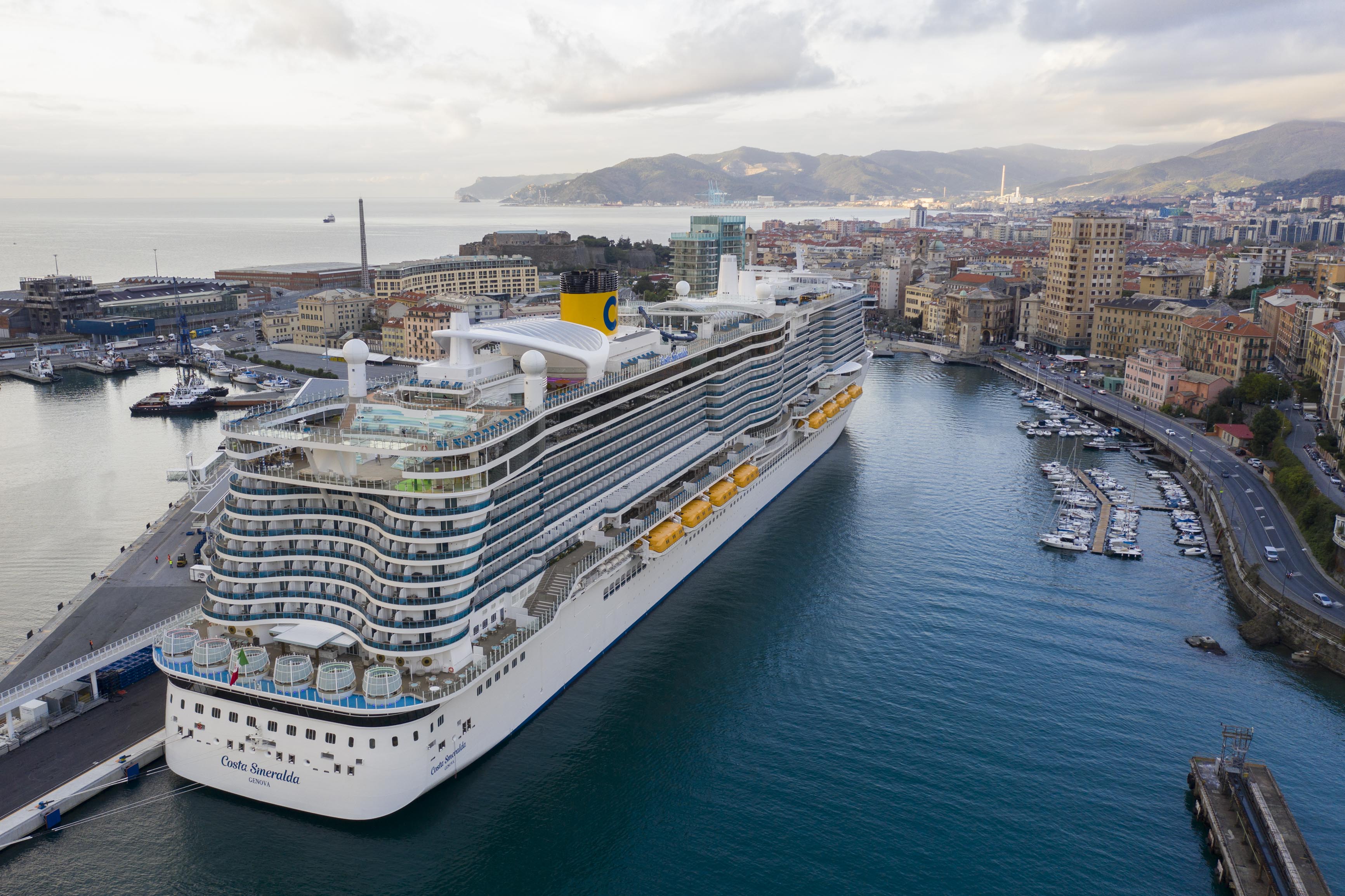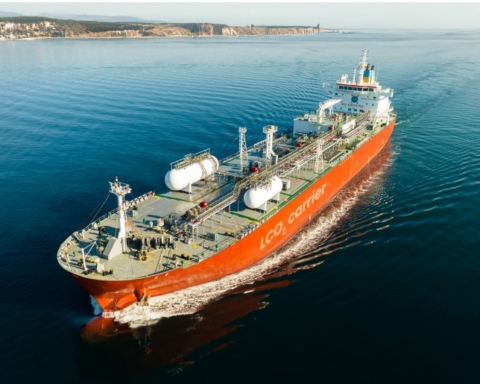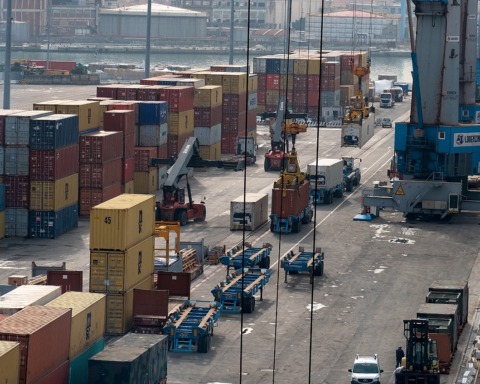“Many ports have received state funding to electrify their quays, and some, such as Savona and Genoa, seem to be on seem to be on the verge of completing the actual project. However, we should also think about who will have to use this technology, i.e. companies.”
Rossella Carrara, Corporate Relations & Sustainability VP at Costa Group, said this in an interview in which she discussed the commitment that the Italian cruise group is pursuing on the sustainable growth front. Among the topics touched on were the role that cold ironing can play in the fight against environmental pollution and the impact of the war in the Ukraine on the cruise sector.
Rossella Carrara, let’s start from current events: what impact has the continuing conflict in the Ukraine had and will have, in your opinion, on cruise traffic?
The war in the Ukraine is having both a direct and an indirect impact on cruises. The direct impact is the impossibility, for security reasons, of operating ships in the Black Sea and the easternmost part of the Baltic Sea. The indirect impact, even more significant than the first, concerns the economic effects that the conflict has triggered in Europe: inflation, rising energy and raw material costs.
These factors risk affecting consumer confidence and their ability to spend and generate an increase in operating costs. In such a complex scenario, our offer has been well received by the market, with excellent levels of customer satisfaction, because it has an excellent quality-price ratio, the result of the great work we have done over the last few months to renew our product.
Many cruise lines are striving to make their contribution towards the Net-Zero goal by 2050. We know that Costa Cruises is testing a marine biofuel blend on the Costa AIDA. Can you tell us about it?
Costa Cruises is a pioneer in its commitment to sustainable growth in the cruise sector. For example, we were the first company in the industry to introduce the goals of the UN Agenda 2030 into our business model, making sustainability an intrinsic part of our offer. With respect to climate neutrality, our ambition is to introduce a new generation of ships operating with net zero emissions by 2050.This obviously requires a major focus on research and development. At the moment, there is no single technology that can achieve this alone. There is a mix of technologies, many of them still at an experimental stage, to work on. Biofuel is one of them.In July, AIDA first became the first large cruise ship to be fuelled with a marine biofuel mixture, obtained from 100% sustainable raw materials such as waste cooking oil, and marine diesel. However, there are many other technologies besides biofuel we are experimenting with, such as batteries or fuel cells.In order to be able to better develop this considerable amount of research work, we have even set up a department within our group dedicated to decarbonization. As mentioned, in many cases, it involves research, which we tackle together with qualified partners and which requires considerable investment. This is why it would be useful for institutions to intervene, at national and European level, as has happened in other sectors, to support the implementation of these new ‘green’ technologies on cruise ships with incentives and funding.
You recently signed an agreement with Trenitalia to study integrated ship-train travel solutions, enhancing local areas and their characteristics. What is the aim of this agreement and what synergies do you plan to develop in Tuscany?
In the summer of 2021, while we were restarting, we presented our ‘Manifesto for Valuable, Sustainable and Inclusive Tourism‘ and started to share it with institutions and local communities. This 10-point charter summarizes Costa Cruises’ commitment to develop hand-in-hand with the destinations where it operates its ships.This manifesto is based on a fundamental concept: considering ships as an integral part of the local areas and communities that welcome them during their voyage, and no longer as means of transport that enter and leave ports. Consequently, our efforts to improve environmental performance do not end on the ship but must necessarily also involve all that part of cruise-related mobility that takes place ashore, such as the excursions or transport needed to take passengers to embarkation ports and bring them home. Being an Italian company, operating the majority of its ships in Italy, we started with collaborations involving large Italian companies, such as Trenitalia. Trains are sustainable means of transport and they are widely used in our country. So, they suit our objectives perfectly. Moreover, it also allows us to create important synergies for enhancing Italy’s heritage. In particular, with Trenitalia, we have launched a strategic project for sustainable passenger transport, focusing on certain connections with Costa Crociere’s ship destination ports, with the involvement of national, regional and local institutions as well. The initiatives under the agreement also include the study of local electric feeder trains connecting ports and railway stations , and of ‘last-mile tourist’ port-city-airport rail links.
Your company was the first to introduce LNG propulsion. Do you believe that Liquefied Natural Gas is still a fuel to focus on today or do you share the position of those who consider it an outdated solution in view of the complete transition to fully sustainable alternative fuels (hydrogen, ammonia, etc.)?
Over the years, the Costa Group has been pioneering sustainable innovation for the entire industry by constantly introducing new, industry-first, advanced technologies on board its ships. In particular, we were the first to introduce LNG propulsion, when a dedicated infrastructure did not yet exist in Europe.Today, LNG has become the norm for cruises, with as many as four ships already in service in our Group’s fleet. In the meantime, many other companies have followed suit, ordering vessels running on LNG. As mentioned, the road to net zero emissions for cruises is characterized by experimentation, research, with no new technology currently able to provide the amount of energy a large cruise ship needs.Neither hydrogen nor ammonia. LNG, on the other hand, is already a certainty, and is currently the most advanced and effective fuel technology available for reducing emissions. So, even if it is not the final solution, LNG is nevertheless an important, lasting step forwards in our industry’s sustainable transition.
Many ports, including Livorno, are turning to the electrification of quays to reduce pollution. In your opinion, does this actually have tangible effectiveness in the fight against pollution?
Shore power is another type of technology we are working on with our new decarbonization department. At the moment, about one third of our ships are already prepared, with another five in the process of being fitted out. In Northern Europe, where ports are already equipped, vessels operated by our German company AIDA Cruises, regularly use shore power.This technology is certainly effective, as it makes it possible to reduce or eliminate the use of fuel during vessel calls at ports by connecting them to the on-shore grid. Provided, of course, that the energy from shore is produced in a sustainable manner. The problem so far has been that only a few ports worldwide were equipped to provide shore power for cruise ships, and, in particular, none in the Mediterranean. Recently, things have started to change. Many ports have received state funding to electrify their quays, and some, such as Savona and Genoa, seem to be on the verge of completing the actual project. However, thought should also be given to who will have to use this technology, i.e. companies. To make the most of this opportunity, it would be desirable for institutions to intervene not only to guarantee economic support for ship refitting and harmonization of energy prices, but also to establish standardized implementation models in all ports. If each port has a different standard, it becomes impossible for companies to use shore power continuously and thus becomes operationally and economically unsustainable.
Translation by Giles Foster




